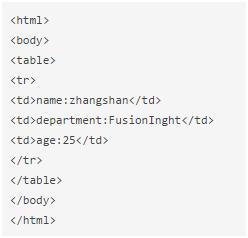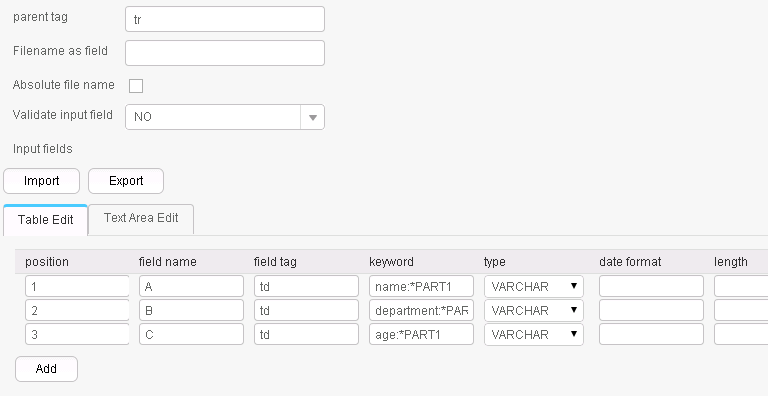HTML Input¶
Overview¶
HTML Input operator imports a regular HTML file and converts elements in the HTML file into input fields.
Input and Output¶
Input: HTML file
Output: multiple fields
Parameter Description¶
Parameter | Description | Type | Mandatory | Default Value |
|---|---|---|---|---|
parent tag | Upper-layer HTML tag of all fields for limiting the search scope. | string | Yes | None |
Filename as field | User-defined field whose value is the name of the file that stores the current data. | string | No | None |
Absolute file name | Whether the file name used as the value of Filename as field contains an absolute path. Selecting the option button indicates that the file name contains an absolute path; deselecting the option button indicates that the file name does not contain a path. | boolean | No | No |
Validate input field | Whether to check the type matching between the input field and the value. If the value is NO, the field is not checked. If the value is YES, the field will be checked. If the input field does not match the value type, the line is skipped. | enum | Yes | YES |
Input fields | Information about input fields:
| map | Yes | None |
Data Processing Rule¶
parent tag is configured first to limit the search scope. The value of parent tag must exist; otherwise, the obtained content is empty.
Input fields are configured so that the sub-tags can be used to precisely locate the tags of fields. If the tags are the same, keywords will be used for precise matching.
The keyword is used to match the content of the field. The configuration method is similar to that of the File filter field in the From settings. The wildcard (*) is supported. The following three tags are provided to assist in locating the field:
#PART: indicates the values matched by wildcard *. If there are multiple *, you can specify an order from left to right and obtain content that matches the sequence number *. For example, #PART1 indicates to obtain the value that matches the first * and #PART8 indicates to obtain the value that matches the eighth *).
#NEXT: indicates that you can obtain the value next to the value that matches the tag.
#ALL: indicates that you can obtain all the values that match the tag.
If the tag is configured incorrectly, the obtained value is empty, but no error is reported.
Example¶
The following figure shows the source file.

Configure the HTML Input operator to generate fields A, B, and C.

Three fields are generated, as shown in the following figure.
